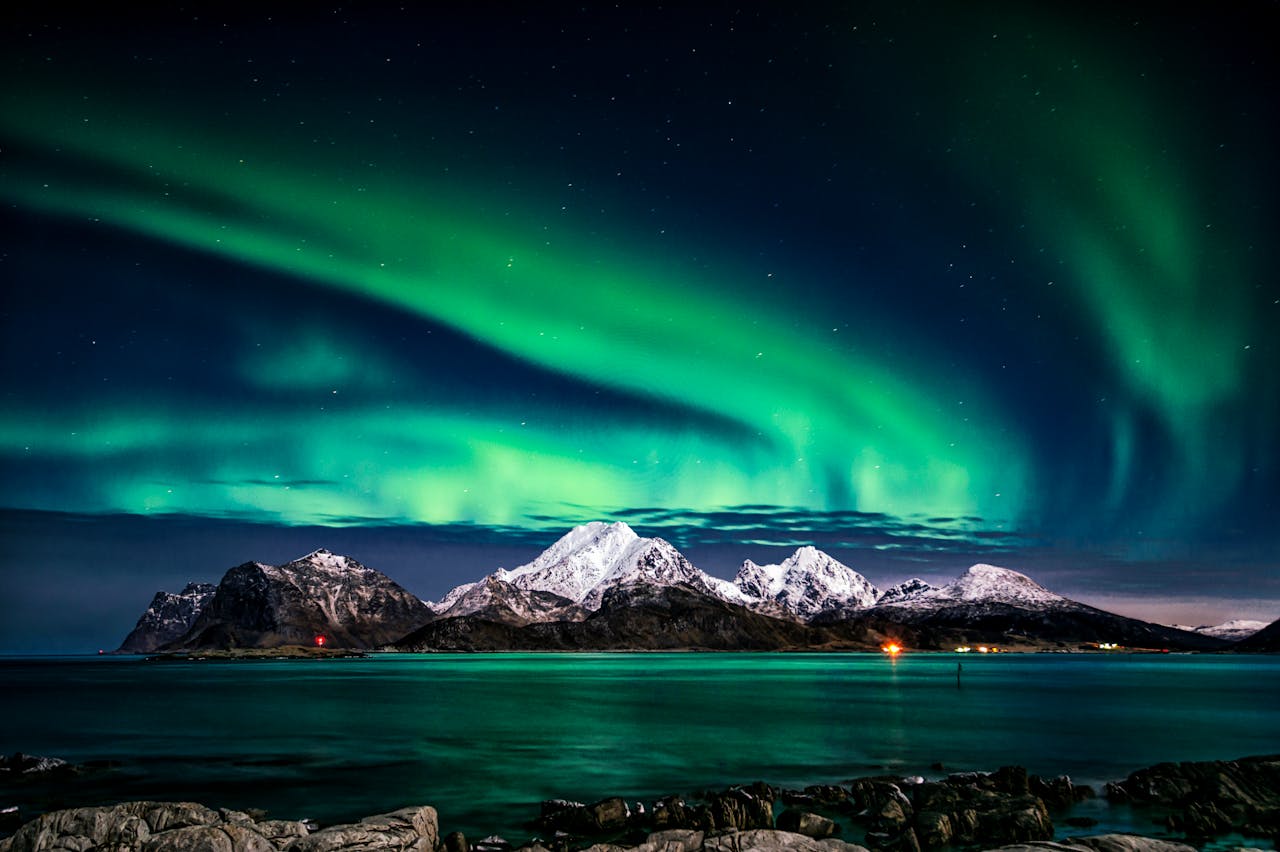

For those who love watching the sky in all of its wonders, you’ve likely already caught the total solar eclipse in April and the Northern Lights earlier in May. Or, maybe you didn’t even realize these events were happening and missed them! Either way, there are still many spectacles to observe in the sky in 2024, aside from the always-awesome full moon that comes out every 28 days. So, ensure you have the remaining celestial observations on your calendar.
1. Mars and Uranus Before Dawn — July 15
On July 15, a few hours before the sun rises, the planets Mars and Uranus will be in right ascension, visible on the eastern horizon. When two planets are visible close to each other, or “aligned,” it is called a planetary conjunction. With Mars and Uranus, this meeting only happens every couple of years. So it’s worth turning in extra early on July 14 to ensure you get plenty of sleep before this early rising.
Astronomers say you should be able to catch Mars conjoined with Uranus about one hour before the sun rises. At this point, they will also be making a “close approach,” meaning Mars and Uranus will pass within just about 32 arcminutes of each other, or about the same average diameter as a full moon. Put July 15 in your Google, Apple, or Calendar.com schedule, and set your alarm the night before!
2. Southern Delta Aquariids and Perseid Meteor Shower — July 30 to August 13
Beginning in late July and expected to last through early August, you’ll get to see two super cool meteor showers. The Delta Aquariids, typically present over the Southern Hemisphere, can still often be seen from the southern United States. The Perseids, in contrast, are one of the most popular meteor showers for skywatchers in the Northern Hemisphere. If you’re watching in early August, you may catch them mixing it up in a dark sky.
The Delta Aquariids are considered space debris from the comet 96P/Machholz, a short-period comet that circles the sun every five years or so. The Perseids are from a much longer-period comet, the Swift-Tuttle, which orbits the sun about once every 133 years. The fact that these two meteor showers appear around the same time is so cool, and it’s an event worthy of adding to your schedule.
3. Saturn in Full View — September 8
While the ringed planet is visible with binoculars or a telescope many mornings throughout the year, on September 8, Saturn will reach opposition. This means that Saturn and the sun will be on directly opposite sides of the sky. When this opposition happens, Saturn rises when the sun sets and stays visible until the sun rises. It will also appear larger than normal and will remain this way for weeks following this date.
Because Saturn takes about 29 years to orbit the Sun, you can observe its opposition once a year. This happens since Earth, with its shorter orbit, catches up to Saturn every 378 days. To be sure you don’t miss it, watch for Saturn in the south-eastern sky as the sun sets. Have your binoculars or telescope ready to really enjoy the show. Add this to your list of back-to-school events to put on your schedule. (This also happens annually with other outer planets like Jupiter, Uranus, and Neptune, while Mars reaches opposition about once every two years.)
4. Partial Lunar Eclipse and Supermoon — September 17-18
As if a partial lunar eclipse wasn’t interesting enough, on September 17 and 18 nights, you’ll also get a supermoon. A partial lunar eclipse occurs when only part of the moon drifts into Earth’s shade. The planets are not perfectly aligned, so you’ll look up and see some of the moon appearing as its typical luminescence, and the other portion will appear red. What makes this even particularly fascinating is that it is also a supermoon.
A supermoon happens when the moon is both full and at its closest point to Earth during its orbit. The September full moon is commonly called the harvest moon because it is at this time of year that humans once harvested their crops and began preparing for colder, harsher weather to come in fall and winter. So, grab a comfort snack and lay on a blanket in the grass around 8:00 p.m. to catch this event at its fullest magnitude.
5. Draconid Meteor Shower and Tsuchinshan-Atlas Comet — October 8-13
Unlike the Aquariid and Perseid showers, which can last for weeks, the Draconid meteor shower is short-lived. The space debris from the Giacobini/Zinner comet will have a duration of only five days, from October 6 through October 10. Fortunately, you don’t have to stay up all night or wake up before dawn to catch this shower. In a rare event, the Draconid meteor shower will appear just after nightfall on what should be a few moonless nights.
And if space debris is not enough, how about an actual comet? The Tsuchinshan-Atlas comet is expected to be visible to the naked eye this fall as it passes close to the sun. Just as the meteor shower ends, look up into the sky to catch the bright, icy, dusty tail of this comet, which could be exceptionally bright as it “races” across the night sky. The Northern Hemisphere hasn’t had a comet this bright since Hale-Bopp in 1997.
6. Super Beaver Moon — November 15
If you haven’t managed to catch a supermoon yet this year, the beaver moon in November will be your last chance. To most observers, a supermoon appears to be 10% larger than a regular full moon. Moonrise on November 15 is expected to occur at 4:29 p.m. EST, which means you might be able to catch this supermoon at its highest point in the sky once it gets dark.
The November full moon is called the beaver moon because it is the time of year when the first snowfall is taking place for many people. The frost is settling in, and, you guessed it, beavers start building their dams before the ground becomes too hard from freezing. This would be a great night to make a bonfire, wrap up in cozy blankets, and spend the night out stargazing. It’s a wonderful event to squeeze into your calendar for the holidays.
7. Geminid Meteor Shower — December 14-15
If you love meteor showers, you can get one more in before the year ends, and this one will be a doozy. The shower is expected to last from mid-November until the end of December, with the peak arriving on or around December 15. Unfortunately, the full moon also arrives on the 15th so that the meteors will have competition. On the bright side, Geminid meteors are unusually bright, so you may still be able to catch many of them racing through the night.
In the Northern Hemisphere, wander outside after nightfall and just observe the sky. You may be able to catch some of this space debris before the full moon comes out or after it passes through the sky. Perhaps one of the reasons these meteors are so bright is that they are debris from an Apollo asteroid rather than a comet. So, not only will you get a big, bright meteor shower, but now you’ve got fun talking points, too.
Add these celestial events to your calendar, and plan around them. You can have a summer pool party around one meteor shower and a Christmas or winter solstice event around another. Gathering around these kinds of astronomical occurrences is the stuff of memories that will last for decades. And even if you don’t see anything in the night sky, you’ll remember the time you spent together looking, which is precious enough.
Featured Image Credit: Photo by stein egil liland; Pexels











Abby Miller
Student at UC Berkeley, currently working on a degree in Electrical Engineering/Computer Sciences and Business Administration. Experienced in CSX, productivity management, and chatbot implementation.